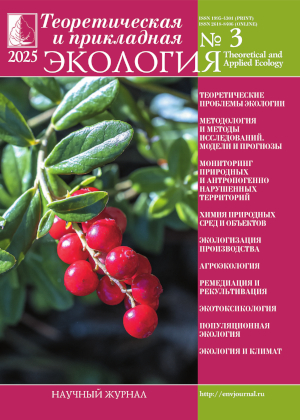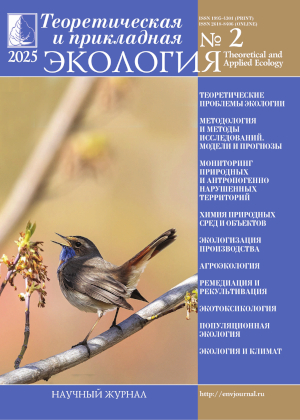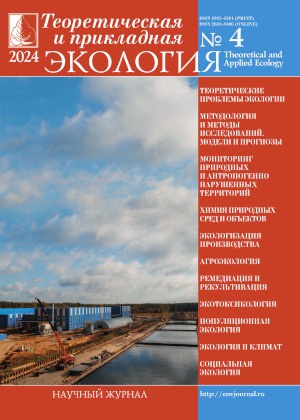 ISSN 1995-4301
ISSN 1995-4301(Print)
ISSN 2618-8406
(Online)
Online version of the journal
|
Natural-climatic factors in ecological zoning of the city of Irkutsk |
||||
| E.V. Maksyutova, L.B. Bashalkhanova, L.M. Korytny, A.A. Sorokovoi | ||||
| Section: Monitoring of natural and anthropogenically disturbed areas |
||||
| An analysis is made of the natural-climatic characteristics of the formation of the ecological status of the atmospheric air in the city of Irkutsk. It is found that its chronic pollution is associated with a long-term annual exceedance of MAC for 5 to 6 specially hazardous pollutants, and with a persistent presence of suspended substances (up to 2.4 MAC) and benzo(a)pyrene (up to 7.8 MAC). The main volume of pollutants emissions corresponds to a long-lasting heating season (mid-September‒mid-May). A zoning of the territory of the city was carried out according to the degree of the possible effect of topography and prevailing type of underlying surface (water, forest-park, and stone and wooden buildings) on air temperature in the atmospheric ground layer. The zone of strong influence includes three types of microclimate of lowlands, with the January temperature deviations from 1.9 to ‒3.6°C from the Irkutsk, Observatory base weather station. Stagnant phenomena in this zone can promote formation of intense air pollution of residential and recreational territories. In this case, topography is the leading factor for the spatial differentiation of air temperature. Because of a high activity of the air exchange, the summit surfaces experience a weak impact of the environmental factors. The zone of moderate impact on slopes and planate territories reflects the local characteristics of the underlying surface. The dominant influence of stone buildings and roads on air temperature is most clearly pronounced in the center of the city on the right bank of the Angara; on the left bank, it is smoothed out by the influence of forested areas. With distance from the center of the city, similar air temperatures are typical for the slopes of different gentleness and aspect. This occurs as a result of significant differences in heat exchange in the dominant types of underlying surface. | ||||
| Keywords: atmospheric air condition, microclimate of the city, deviations of air temperature in January, types of underlying surface, zoning of the urban environment |
||||
| Link | ||||
 |
||||
| Article published in number 2 for 2021 DOI: 10.25750/1995-4301-2021-2-055-059 |
||||
|
|
36, Moskovskya street, Kirov, 610000, Editorial Board "Theoretical and Applied Ecology." Phone/fax: (8332) 37-02-77 e-mail: envjournal@vyatsu.ru The journal was founded in 2007 |
||||||




 Select viewing options
Select viewing options